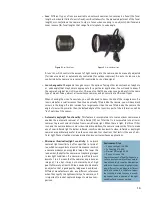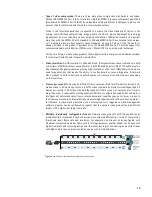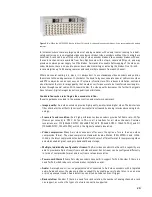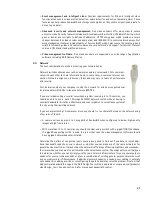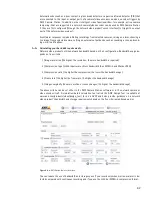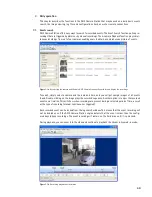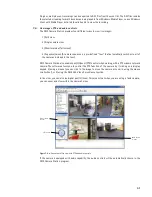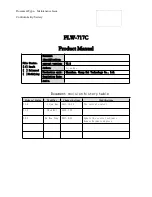
27
Mounting surveillance cameras
This chapter provides recommendations on how to best achieve useable, high-quality, surveillance video
based on camera positioning and environmental considerations.
The following are some guidelines:
>
Surveillance objective
When positioning a surveillance camera, it is important to keep in mind the kind of
image you would like to capture. If the aim is to get an overview of an area to be able
to track the movement of people or objects, make sure you are using a suitable camera
and that it is placed in a position that achieves this goal.
If the intention is to be able to identify a person or object, you will need a suitable
camera that is positioned or focused in a way that will capture the level of detail
needed for identification purposes. It may be favorable to place a camera in a high
position to limit tampering. However, a lower placement may improve identification of
faces or detailed objects, avoiding a “bird’s eye” perspective. Local police authorities
may also be able to provide guidelines on how best to position a surveillance camera.
A letter chart, with varying letter sizes (attached as an appendix in this document), can
be used as an indicator of the level of detail an installed camera can provide. A
spinning Rotakin (see device at right) may also be used to test how well a camera
displays moving objects.
>
Housing
If a camera is to be mounted outdoors or in a relatively hostile environment, it needs a protective
(weatherproof and/or vandal-proof) housing. Camera housings come in different sizes and qualities
and some versions have built-in fans (for cooling) and/or heaters. There are vandal-resistant cameras
that are already designed with an IP66-rated casing and have a built-in heater and fan, such as the
AXIS 225FD Network Camera. In such a case, no additional housing accessory is required.
Figure 3.b.
Outdoor casing suitable for use with Axis network cameras.
>
Reflections
If a camera is mounted behind a glass in a housing, the lens must be placed close to the glass.
Otherwise, reflections from the camera and the background will appear in the image. To reduce
reflection, special coatings can be applied on any glass used in front of the lens.
Figure 3.c.
How to position a camera to avoid reflections.
3.
Re
fle
ct
io
n
Re
fle
ct
io
n
Glass
BAD
Glass
GOOD
Summary of Contents for IP-Surveillance system
Page 49: ...49 ...


